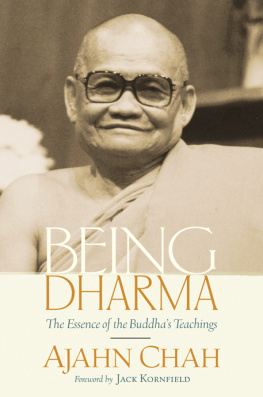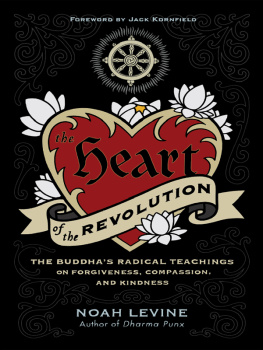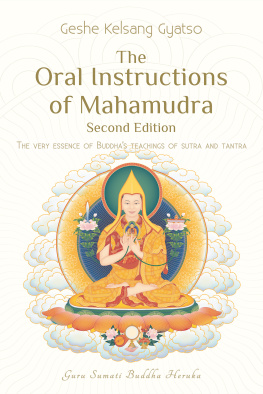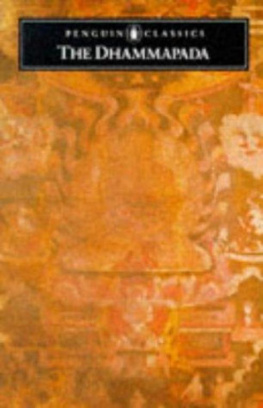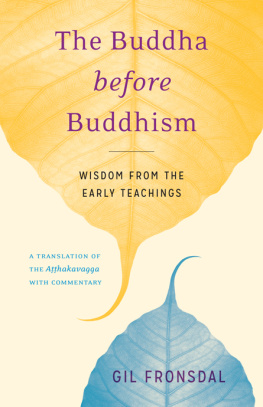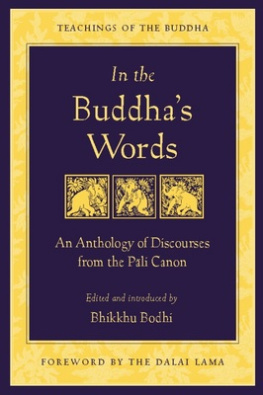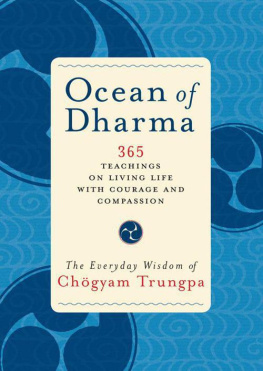Chā - Being dharma : the essence of the Buddhas teachings
Here you can read online Chā - Being dharma : the essence of the Buddhas teachings full text of the book (entire story) in english for free. Download pdf and epub, get meaning, cover and reviews about this ebook. year: 2001, publisher: Shambhala, genre: Religion. Description of the work, (preface) as well as reviews are available. Best literature library LitArk.com created for fans of good reading and offers a wide selection of genres:
Romance novel
Science fiction
Adventure
Detective
Science
History
Home and family
Prose
Art
Politics
Computer
Non-fiction
Religion
Business
Children
Humor
Choose a favorite category and find really read worthwhile books. Enjoy immersion in the world of imagination, feel the emotions of the characters or learn something new for yourself, make an fascinating discovery.
- Book:Being dharma : the essence of the Buddhas teachings
- Author:
- Publisher:Shambhala
- Genre:
- Year:2001
- Rating:5 / 5
- Favourites:Add to favourites
- Your mark:
- 100
- 1
- 2
- 3
- 4
- 5
Being dharma : the essence of the Buddhas teachings: summary, description and annotation
We offer to read an annotation, description, summary or preface (depends on what the author of the book "Being dharma : the essence of the Buddhas teachings" wrote himself). If you haven't found the necessary information about the book — write in the comments, we will try to find it.
Chā: author's other books
Who wrote Being dharma : the essence of the Buddhas teachings? Find out the surname, the name of the author of the book and a list of all author's works by series.
Being dharma : the essence of the Buddhas teachings — read online for free the complete book (whole text) full work
Below is the text of the book, divided by pages. System saving the place of the last page read, allows you to conveniently read the book "Being dharma : the essence of the Buddhas teachings" online for free, without having to search again every time where you left off. Put a bookmark, and you can go to the page where you finished reading at any time.
Font size:
Interval:
Bookmark:
Employing simple, precise language, his words convey his belief that liberation is possible for each of us through diligent effort and sincere intention.
Tricycle
Chahs style of teaching Buddhism was informal and non-systematic; he was renowned for giving instructions in a way that an uneducated rice farmer could understand. The talks in Being Dharma reflect Ajahn Chahs fundamental orientation toward Buddhism as a way of life, rather than a set of rules or rituals.
Shambhala Sun
ABOUT THE BOOK
Chah offers a thorough exploration of Theravadan Buddhism in a gentle, sometimes humorous, style that makes the reader feel as though he or she is being entertained by a story. He emphasizes the path to freedom from emotional and psychological suffering and provides insight into the fact that taking ourselves seriously causes unnecessary hardship.
Ajahn Chah influenced a generation of Western teachers: Jack Kornfield, Sharon Salzberg, Sylvia Boorstein, Joseph Goldstein, and many other Western Buddhist teachers were at one time his students. Anyone who has attended a retreat led by one of these teachers, or read one of their books, will be familiar with this masters name and reputation as one of the great Buddhist teachers of this century.
AJAHN CHAH (19191992) was a beloved Thai Buddhist master whose teachings were refreshingly uncompromising in their clarity and certaintythe certainty of a meditator who has achieved deep understanding of the Buddhas teachings. He was an important influence and spiritual mentor for a generation of American Buddhist teachers.
Sign up to learn more about our books and receive special offers from Shambhala Publications.

Or visit us online to sign up at shambhala.com/eshambhala.
BEING DHARMA

The Essence of the Buddhas Teachings
AJAHN CHAH
TRANSLATED BY PAUL BREITER

SHAMBHALA
Boston & London
2012
Shambhala Publications, Inc.
Horticultural Hall
300 Massachusetts Avenue
Boston, Massachusetts 02115
www.shambhala.com
2001 by Paul Breiter
Cover design by Jim Zaccaria
Cover photograph by Jim Roy
All rights reserved.
No part of this book may be reproduced in any form or by any means, electronic or mechanical, including photocopying, recording, or by any information storage and retrieval system, without permission in writing from the publisher.
Library of Congress Cataloging-in-Publication Data
Chah, Achaan.
Being dharma: the essence of the Buddhas teachings / Ajahn chah; translated by Paul Breiter; foreword by Jack Kornfield.1st ed.
p. cm.
Includes index.
eISBN 978-0-8348-2338-9
ISBN978-1-57062-808-5 (pbk.)
1. Spiritual lifeBuddhism 2. BuddhismDoctrines.
I. Breiter, Paul
BQ5650 .C43 2001
294.342041DC21
2001020065

Dedicated to the long life
of all genuine spiritual masters
and the preservation
of their pure and authentic traditions.
CONTENTS


WHEN THE FIRST WESTERN DISCIPLES arrived at Wat Pah Pong in the 1960s, Ajahn Chah did not give them the special admiration and treatment that Western monks often received in Thailand. He did not excuse them from any of the demanding challenges and strict training of the monastery. Seated on a wooden bench at the foot of his cottage in the center of a huge forest, he peered at them like a watchmaker taking off the cover of an intriguing new piece, and demanded to know whether they understood suffering or how to find peace in this world. Then he would laugh in welcome and bid them to listen, and if they dared, to join him in practice for a while.
In those years, the monastic community was relatively small and Ajahn Chah was still unknown as a teacher. Twenty-five years later, he had become one of the most honored and revered forest masters of the century, and in 1993, nearly a million people joined the king and queen of Thailand at his funeral in order to pay their last respects at his temple. By then, his influence had spread worldwide, with a hundred branch monasteries and respected disciples teaching internationally.
Ajahn Chahs natural wisdom expressed itself in the wide range of skillful means he used to bring students to freedom. The demanding discipline and mindful dignity of the monastery were his first line of practice. In the community, he also taught by anecdote and example, by story and piercing, koanlike questioning. He used humor and poked fun at the delusions of the world and those he mentored. He taught by close-knit relationship, by compassionate understanding and insightful no-holds-barred dialogue. Though his way of practice involved strict training of virtue, precepts, renunciation, and concentration, he taught them with a light heart, and all were done in the service of wisdom and freedom.
From the start, his teaching of meditation focused on this freedom. While he instructed students in many traditional practices of mindfulness and concentration, he deliberately chose not to emphasize remarkable meditation experiences, samadhi, jhana, or special insight stages. Meditation was a tool, a means to sit and examine ourselves, to quiet the mind and open the heart. He instructed students to abide in the one who knows, to discover the natural peace within. From a base of inner stillness, he pointed out, we can more directly see the truth, the way things are. We can recognize the impermanent, ungraspable nature of life; we can study suffering, its cause, and its end. He taught that meditation is a way for us to let go, to stop the war, to put down the struggle, to be at peace no matter what the circumstances.
Each day, the monastery had periods of chanting and mindful work, walking and sitting meditation, silence and community practice, all interspersed with informal guidance from the master. On occasion, usually after evening chanting, Ajahn Chah would close his eyes and give a more extensive Dharma talk, instructions to his monks, nuns, and other devoted disciples. These discourses could last from one to five hours. The new monks would call the longer ones endurance sessions.
Now Paul Breiter, a longtime student and beloved disciple of Ajahn Chah, has translated some of these discourses from Thai and Lao for Western readers. It is a blessing to have these teachings, the meat and potatoes of Ajahn Chahs Dharma, the evening trainings where he would take the gloves off and challenge us to look squarely at human life. As you read these pages, you can imagine yourself deep in the forest in the early evening after two hours of meditation and sonorous chanting. The light is flickering from the candles, there is a quiet rustling of forest creatures settling down, the evening cicadas are singingthe time has come to reflect on your commitment to a life of wakefulness and truth.
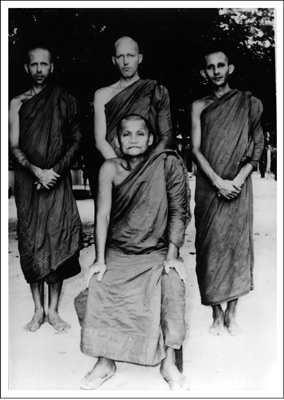
Font size:
Interval:
Bookmark:
Similar books «Being dharma : the essence of the Buddhas teachings»
Look at similar books to Being dharma : the essence of the Buddhas teachings. We have selected literature similar in name and meaning in the hope of providing readers with more options to find new, interesting, not yet read works.
Discussion, reviews of the book Being dharma : the essence of the Buddhas teachings and just readers' own opinions. Leave your comments, write what you think about the work, its meaning or the main characters. Specify what exactly you liked and what you didn't like, and why you think so.

